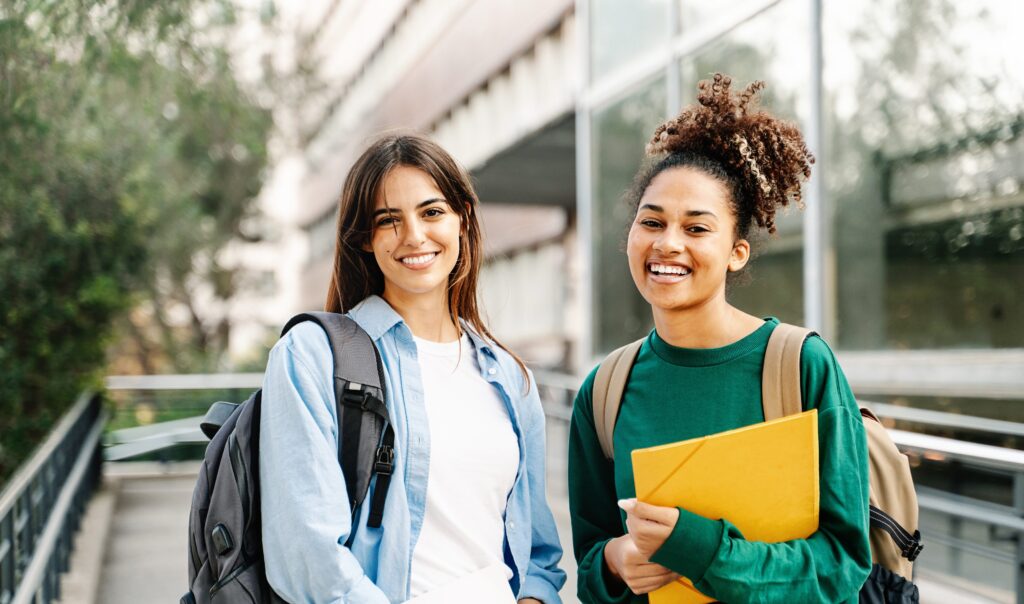From a legal and moral perspective, universities are responsible for supporting students with disabilities, and some have chosen to surpass requirements and find innovative ways to push accessibility forward in the classroom and beyond.
With outside the box thinking, from accessibility-focused student projects to clever uses of modern technology, here are five universities that are taking the lead in breaking down barriers. Anyone involved with the higher education system can gain inspiration from the creative inclusivity initiatives these institutions are taking to promote equitable experiences on and around campuses.
1. NIU is the first US school to install app that helps students who are blind navigate campus
Northern Illinois University (NIU) recently installed QR codes across campus to promote accessibility. The system, NaviLens, works with a mobile application that individuals who are blind can use to scan the QR codes to navigate campus. A spokesperson for the university also pointed out that NIU is the first in the US to install the system.
Using the app, students can scan 160 degrees, at any angle, and pick up the codes from a distance up to 40 feet. Currently, around 1,500 NaviLens codes are on the university’s academic and administrative buildings and bus stops. When the user scans a code, the app reads the contained information aloud and pulls up the text on the screen. The school’s assistant director of ADA, Linda Kocjan, also said that the app will translate into whichever language the user’s phone is set to.
2. UF’s study abroad program for students with disabilities
This year, University of Florida started a new study abroad program designed to be accessible while also focusing on disability-related topics. Students who take part in the UF in London Smart Cities and Disability Access program spend a week in the city, accompanied by the university’s director of the Disability Resource Center. As a part of the UF International Center and the Herbert Wertheim College of Engineering, the course focuses on the innovative use of technology to improve accessibility.
In addition to visiting the city’s top landmarks, the students connect with disability advocacy groups and leaders of companies devoted to smart technology, urban planning, autonomous vehicles and accessible mass transportation. UF plans to host the program, which is open to students of all majors, each spring. One student who attended the first trip credited it for covering innovative approaches to accessibility as well as for raising awareness about the many diverse disabilities that deserve recognition.
3. Engineering students take on projects to make local sites more accessible
Students from University of Maine’s Construction Engineering Technology program select local projects that they can take the lead on while making the local environment more accessible and better for members of the campus and local communities. Their most recent project addressed an aging and rotting footbridge at the Fields Pond Nature Center that crossed a meadow to a boat launch.
Students chose to replace the bridge with a stone and gravel path that allows water to move beneath its surface. Their goal also included ensuring accessibility. While the bridge had been a barrier that prevented access to the launch point for people using wheelchairs, the new path is wide and avoids the pitch issues the bridge presented. The project offered a beneficial experience for the students, who were able to take their knowledge out of the classroom and into the real world while also using their skills to boost inclusivity.
4. Building a neurodiversity center at Rowan College of South Jersey
Rowan College of South Jersey (RCSJ) recently broke ground on a new center aimed to provide lifelong support for individuals with disabilities. The group worked in conjunction with several other organizations to provide on-site housing, education, work-related training, mental health support, medical services, legal advocacy, transportation and athletics in one location.
This initiative is part of a larger commitment by the university to inclusivity at RCSJ and its partner four-year institution, Rowan University. In 2019, Rowen University created a Neurodiversity Task Force with faculty members, staff, parents, students and members of the community to identify ways to better support students who are neurodiverse. Leaders at RCSJ hope that the new center will serve as a model for other universities to replicate.
5. Widespread live captioning for courses and campus events at UMich
University of Michigan is ramping up its accessibility efforts with Computer Assisted Real-Time Transcription captioning for its courses. The university is seeking to better support its students who are Deaf or hard of hearing, as well as those with cognitive disabilities by proving this helpful service. At the same time, UMich announced that it’s hiring two new American Sign Language (ASL) interpreters, acknowledging that students may have different communication needs.
The most recent push at the school also saw the installation of 100 new automatic doors to promote more physical accessibility. According to the new director of disability equity and American with Disabilities Act coordinator these steps are part of an ongoing effort to keep making the campus more inclusive. This approach also highlights the reality of accessibility in education, which is a never-ending journey to improve equity and provide the best possible learning environment for all students.
Verbit supports many top universities with innovative accessibility tools like captioning, transcription and audio description. Reach out to learn how our solutions can help make your campus and courses more inclusive.
